"Goodnight Moon": Accessible Ideas for Children with Multiple Disabilities
Submitted by nabrams3721 on Apr 14, 2017
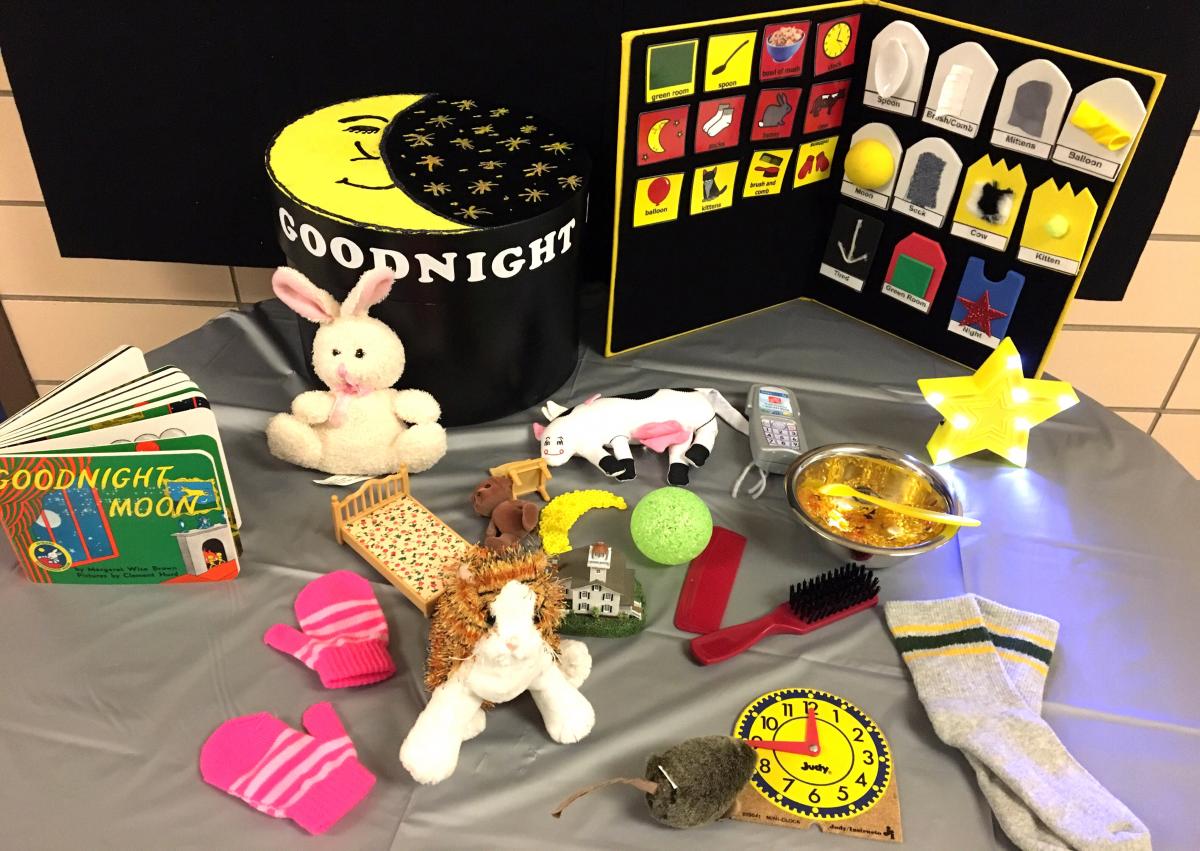
As part of the graduate coursework for Visual Impairments and Multiple Disabilities in the Teacher Preparation Program in Visual Impairments at the University of Kentucky, students were asked to complete four projects: Story Box, Picture Communication Symbols for Story Box, Tactile Communication Symbols, and Talking Book Project.
We are sharing them on Paths to Literacy and hope that others will use them! Please add your comments at the bottom of the page. This project is based on Goodnight Moon by Margaret Wise Brown.
- Story Box
- Picture Communication Symbols for Story Box
- Tactile Communication Symbols
- Talking Book Project
Story Box
I chose the following tactile objects because they are realistic representations of the items in the book that the young bunny is saying goodnight to.
This book is for students in pre-school through 2nd grade. This age group would already have knowledge of, spoon, mittens, balloons, brush, house, cow, kitten, socks and mouse. However, they may need some background knowledge for these items:
- Bowl of mush—explain to them that it is a bowl with a substance similar to the consistency of oatmeal. You could even bring in some oatmeal for them to cook and taste.
- Moon—explain to them that the moon comes out in the night sky. Tell them what color it is and tell them that it takes on different shapes (quarter, half, full). Explain that when the moon is out that usually means it is our bedtime.
- Star—explain that stars are tiny balls of fire that shine brightly in the night sky. Tell them that we can only see them at night.
- Clock—explain that a clock has numbers and tells us what time it is so that we know when it is bed time and when it is time to wake up.
A good way to set up the story is to engage the student’s prior knowledge. Ask students to share with the class things that they do to get ready for bed (brush teeth, get a drink of water, put on pajamas, hug a family member, find their favorite stuffed animal, say goodnight, etc). Ask students to state who they make sure to say good night to before going to bed.
Before reading the story make sure you set the focus. Introduce title, author and illustrator; Show the cover and talk about the setting - Where is this story going to take place? What time of day might it be? Why do you think that?; Explain that in this story, a little bunny takes a long time going to bed and says goodnight to many things that he sees; Take a picture walk letting students describe and point out the details and objects in each picture that the bunny may say goodnight to. Have them use a complete sentence when sharing, such as "I see a red balloon."
Ideas for Implementation:
-
Comprehension: Read the story to the student and as the story is being read, hand the student the object that the bunny is saying goodnight to on that page of the book. When finished reading, ask the student some or all of these knowledge or recall and comprehension questions.
- Name some of the items that the bunny said goodnight to.
- Why did the bunny keep saying goodnight to the items?
- How many items does the bunny say goodnight to?
- Where does this story take place?
- How does it sound at bedtime?
- How does the little bunny know it is time to go to sleep?
- How do we know when it is time to go to sleep?
- What happens at night?
- What do the animals do at night?
- What activities do you do at night?
- What gives us daylight?
- What do you see in the night sky?
- Sorting: Show the students the objects from the book and have them sort the objects into two categories – night and day.
- Finding objects: As the story is read, ask the student to find the object that the bunny is saying goodnight to.
- Sequencing: Ask the student to tell the story in order by getting one item at a time out of the box. He/She must get arrange the items in order as they appear on the pages from beginning to end.
- Rhyming Have students get the objects out and ask them to pair which objects rhyme with one another. You could also at this point pair this activity with a companion rhyme like ‘Twinkle, Twinkle, Little Star’ This is usually a familiar rhyme for students and it also takes place at night.
Picture Communication Symbols for Story Box
Comprehension Questions for Boardmaker Cards
- What do you see in the night’s sky? (moon)
- What color is the great room? (green)
- In the picture on the wall, what animal is jumping over the moon? (cow)
- Who is sleeping in the bed? (bunny)
- There is a ___________ in the bowl full of mush. (spoon)
- What animals are playing with yarn in the great room?(kittens)
- What comes next? Goodnight comb, goodnight brush,goodnight nobody, goodnight_________.(mush)
- What is hanging in the room that rhymes with kittens? (mittens)
- What is floating over the picture of the three bears? (balloon)
- How many clocks does the bunny have in his room? (two)
- What item in the room rhymes with clocks? (socks)
- What item on the bunny’s table rhymes with mush? (brush)
Tactile Communication Symbols
Comprehension Questions for Tactile Symbol Cards
- The bunny said goodnight to the clocks and __________. (socks)
- The room in the story is what color? __________(green)
-
In the green room, there was a telephone and a red
- Balloon
- Ball
- Car
- There were two hair items, a comb and a _________(brush)
- What animal was jumping over the moon?_________ (cow)
- What animals were playing with yarn on the floor of the bedroom? ______________(kittens)
-
What comes out in the sky at night?
- Sun
- Moon
- Birds
- What word rhymes with kittens?(mittens)
-
What is used to eat in the bowl full of mush?
- Spoon
- Knife
- Fork
-
When does the moon come out?
- Morning
- Afternoon
- Night
-
How does the bunny feel at the end of the book when the lights are all turned out in the green room?
- Happy
- Tired
- Sad
-
Activity:
- The activity would involve asking the student these questions after the story has been read aloud. The student would use the symbols to answer the questions. You could also provide an alternate activity by asking students to use the symbols to create a story of their own.
-
Symbols:
- These symbols were chosen because they represent components in the story that are easily related to object or feelings that the student can experience in real life.
-
Implementation:
- The teacher will read the story to the student. Next, the teacher will ask the 10 questions, one at a time, and let the student choose a symbol for the answer. It will depend on the level of the student as to whether the teacher will have all 10 symbols for the student to choose from or just a select few. If the correct symbol is chosen, it will be placed in a bucket. If the student chooses a symbol incorrectly, that symbol will be placed to the side until the correct symbol is chosen. When the student then chooses the correct symbol, the next question can be asked. This is repeated.
-
Background Knowledge:
- The only background knowledge a student may need to know for these symbols is night. Most school age children know what night time is and what happens at night, but students with a visual impairment may lack the ability to see the difference in night and day.
Talking Book Project
Some students may enjoy using a talking PowerPoint book to read along with the book. This would provide the student with a visual as well as an audio version.
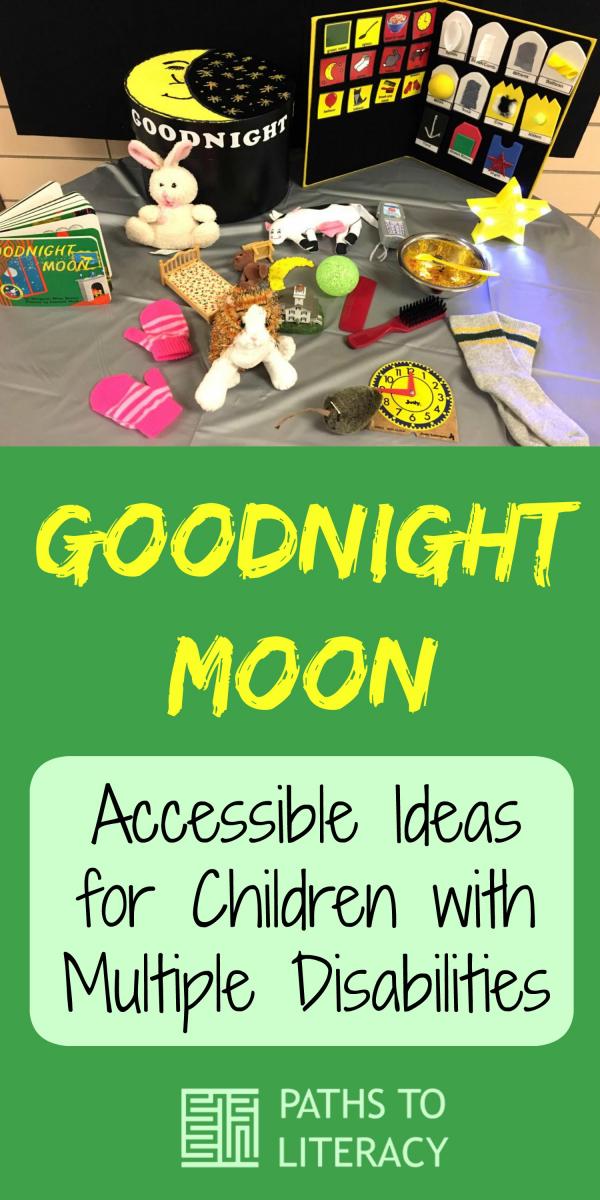

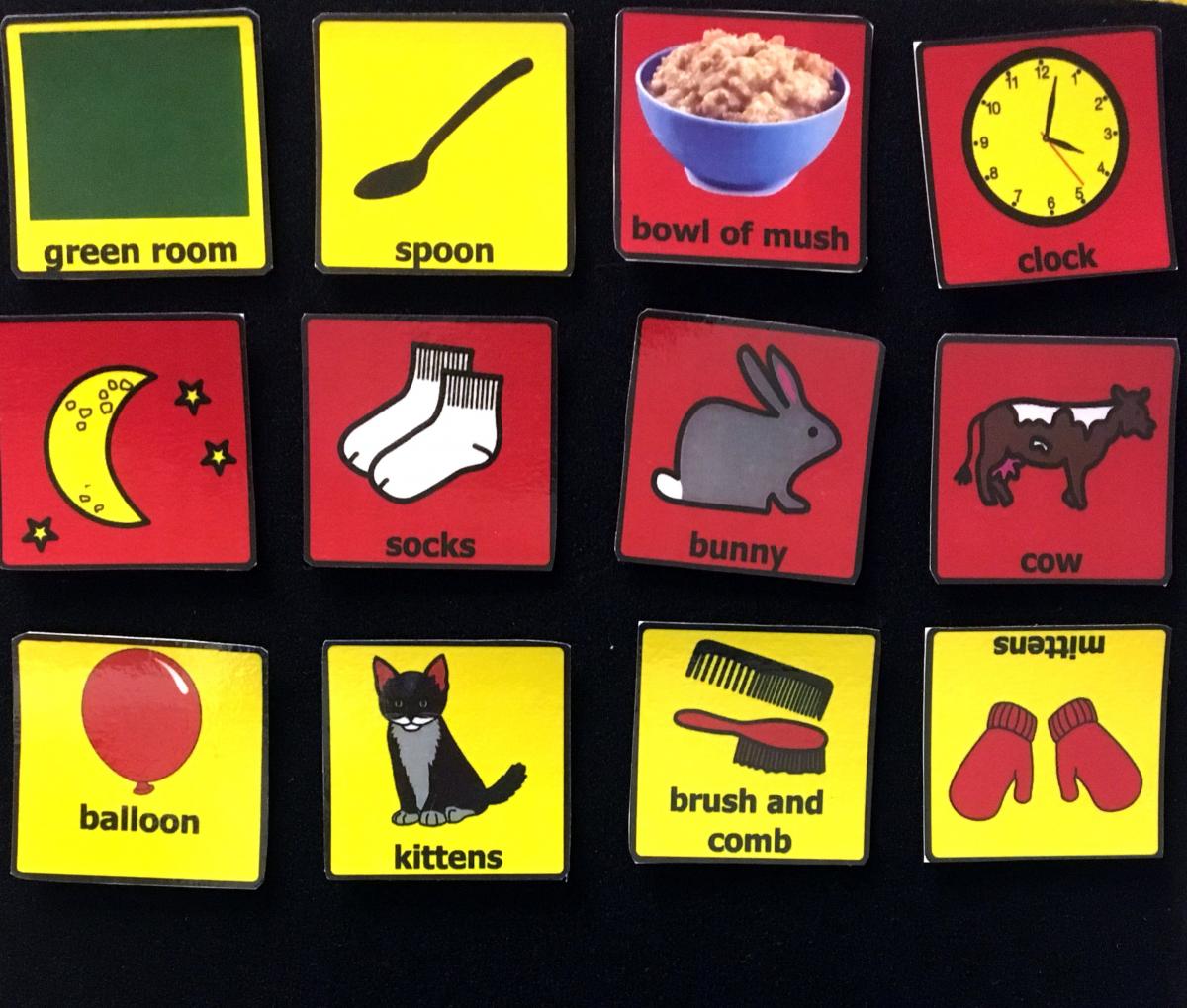
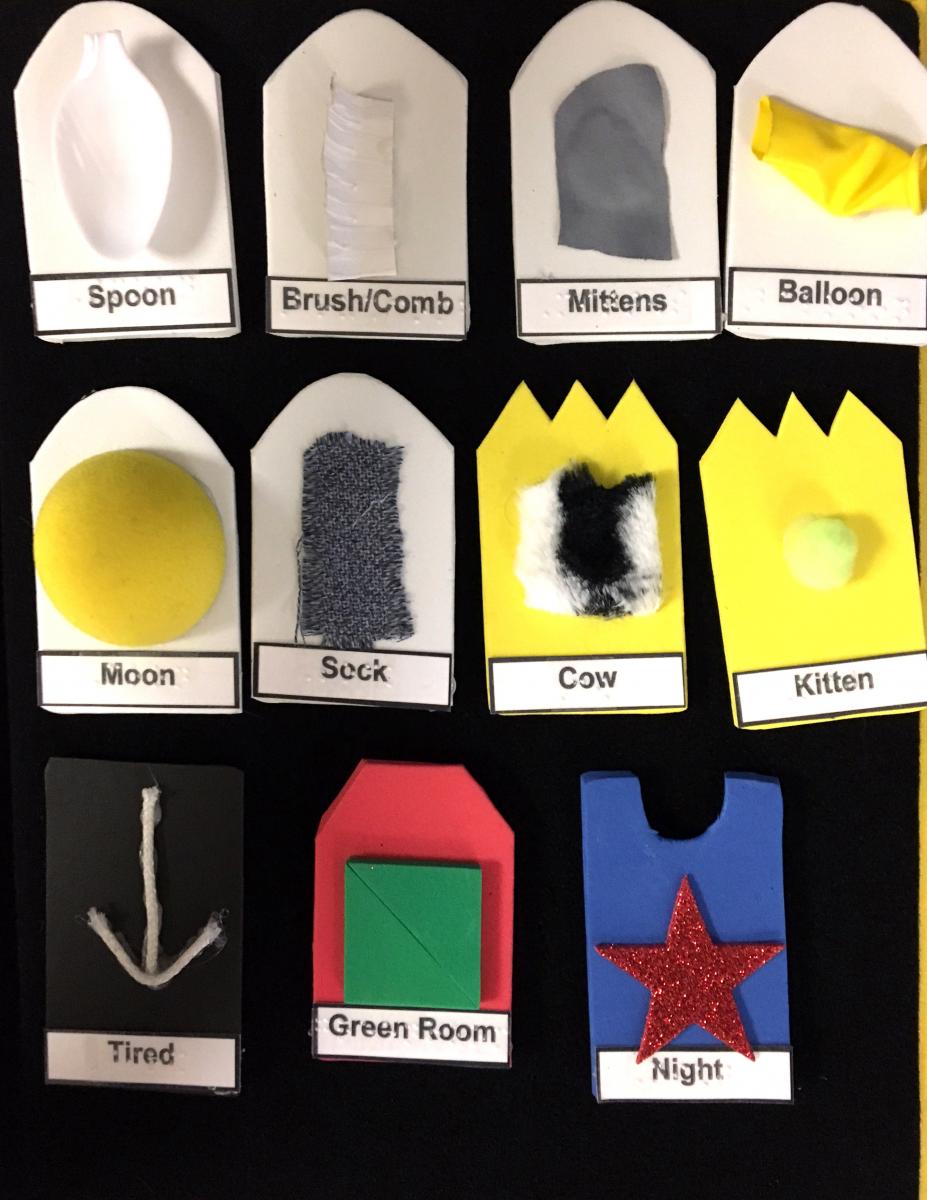
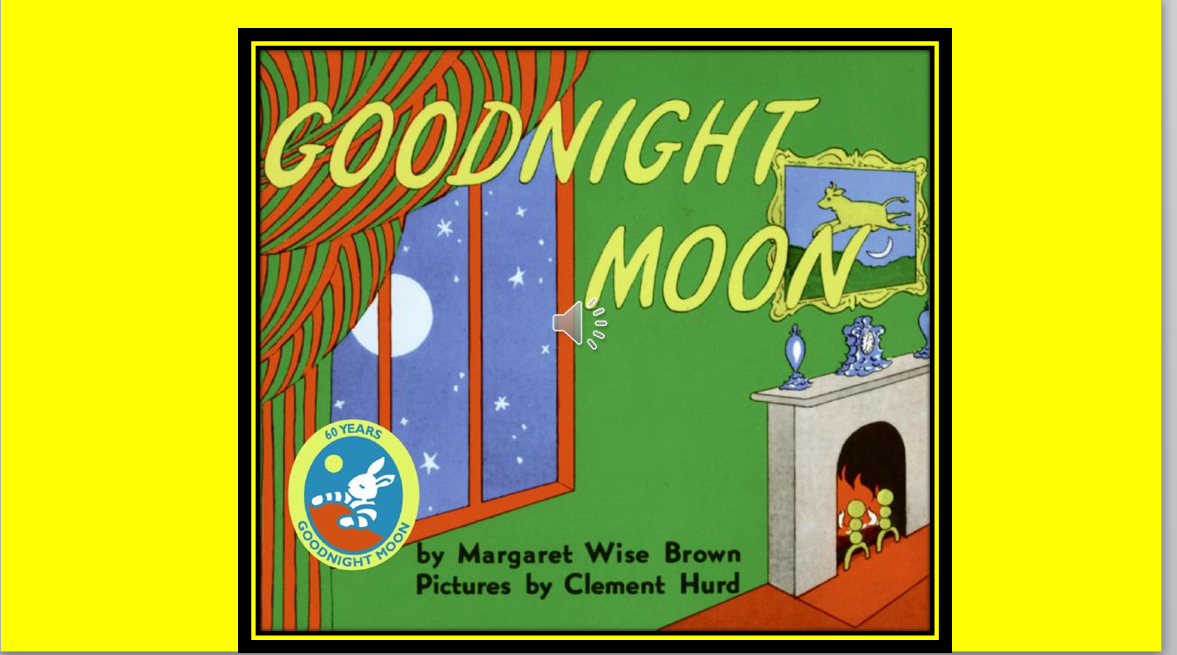
Comments
Goodnight Moon accessible ideas
Ideas for working with students with CVI